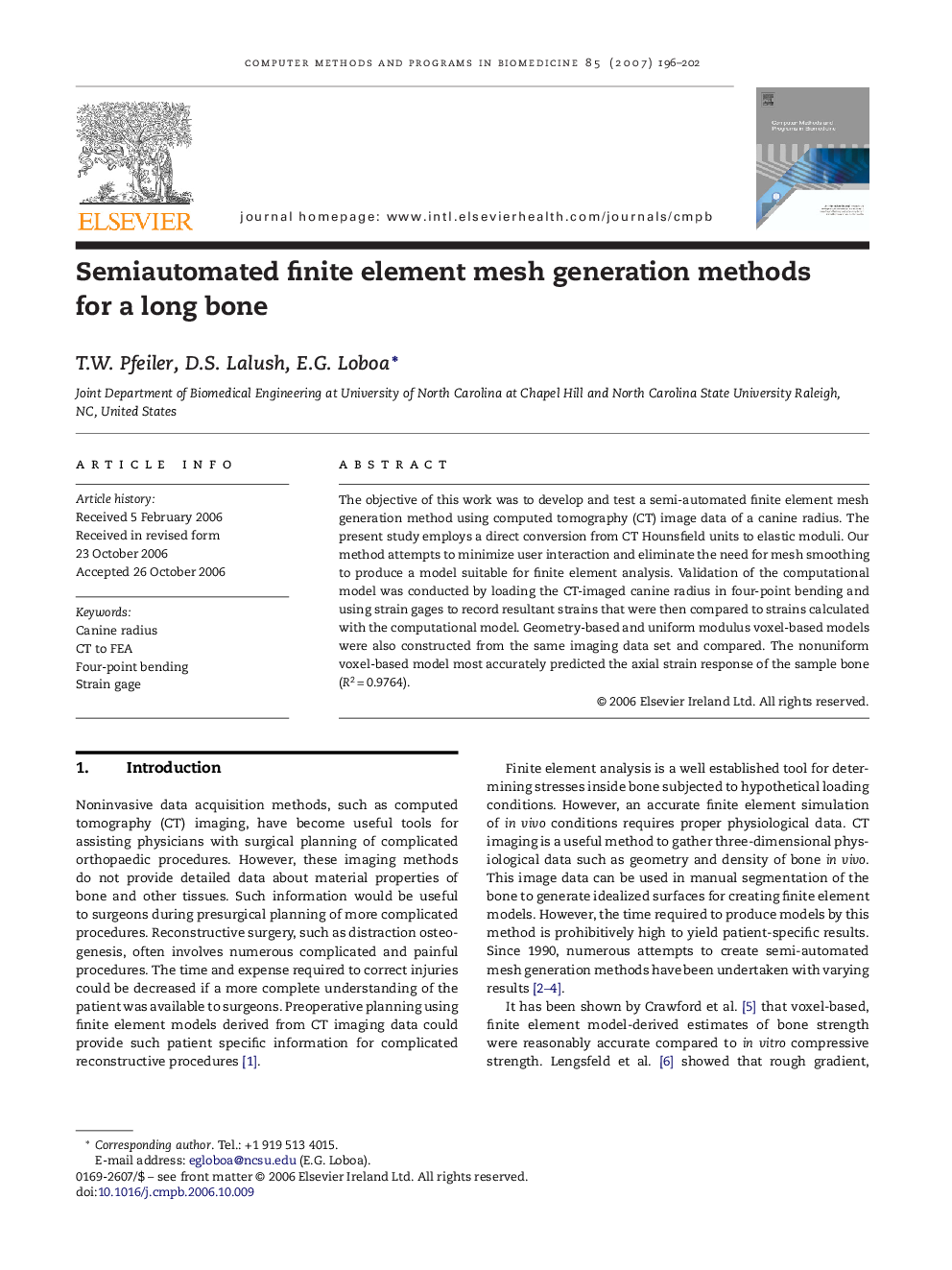| Article ID | Journal | Published Year | Pages | File Type |
|---|---|---|---|---|
| 467280 | Computer Methods and Programs in Biomedicine | 2007 | 7 Pages |
The objective of this work was to develop and test a semi-automated finite element mesh generation method using computed tomography (CT) image data of a canine radius. The present study employs a direct conversion from CT Hounsfield units to elastic moduli. Our method attempts to minimize user interaction and eliminate the need for mesh smoothing to produce a model suitable for finite element analysis. Validation of the computational model was conducted by loading the CT-imaged canine radius in four-point bending and using strain gages to record resultant strains that were then compared to strains calculated with the computational model. Geometry-based and uniform modulus voxel-based models were also constructed from the same imaging data set and compared. The nonuniform voxel-based model most accurately predicted the axial strain response of the sample bone (R2 = 0.9764).
